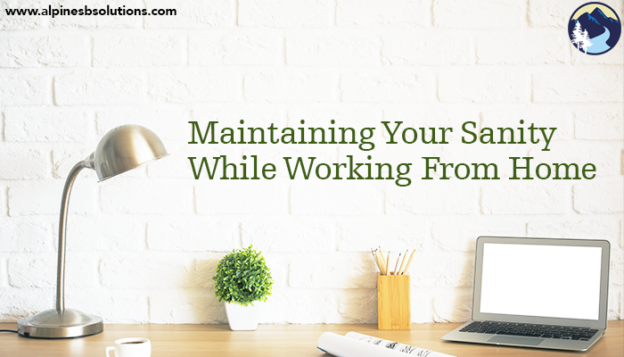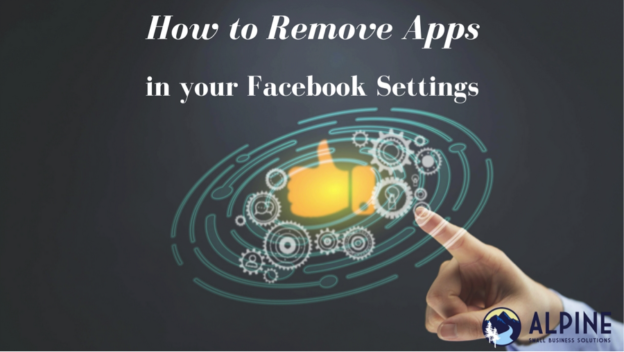One nitty gritty detail about working as a virtual assistant is insurance. But how do you know which you need when there are so many choices? Errors and omissions insurance? Business owner’s policy insurance?
There are a plethora of options. There’s insurance most people get through their companies, like health insurance. There’s insurance common for people who work from home, like business interruption insurance. And there’s insurance for every scenario and disaster under the sun.
With so many options out there, it’s easy to get overwhelmed. (Or even talked into insurance you really don’t need!) But, you can be fine with minimal insurance (unless you’re running your own company). Below are the basic insurance options most likely to benefit virtual assistants.
Business Personal Property Insurance
 You can’t work as a virtual assistant without your tools. Your computer, phone, and desk are some of the invaluable resources you use to get things done. But, what happens if these are stolen or damaged in a natural disaster?
You can’t work as a virtual assistant without your tools. Your computer, phone, and desk are some of the invaluable resources you use to get things done. But, what happens if these are stolen or damaged in a natural disaster?
Unfortunately, most home insurance policies do not cover your home business office. It’s worth a check of course (hey, maybe you’ll luck out), but odds are you’ll need to buy this separately. You can add coverage of business related property as a rider to your home insurance policy.
In most cases, this is a worthwhile investment. You can skip this one if your equipment isn’t worth much or the odds of theft or natural disaster are low.
Business Interruption Insurance
This insurance protects you if your business premises and equipment are temporarily unusable (like after a fire). You’ll get compensated for your loss of income and your operating expenses. Sometimes, the insurance covers expenses for temporarily re-locating to a new location.
 This insurance is added to a property insurance policy or is included in a package policy.
This insurance is added to a property insurance policy or is included in a package policy.
You’re fine skipping this option if it’d be easy for you to work from somewhere else or get replacement equipment (like temporarily borrowing someone else’s computer). But for those who would be stuck if anything happened to their office or equipment, you’ll want to be sure to make this investment.
Disability Insurance
Accidents happen. A car wreck, illness, or other outstanding circumstance can hit you out of nowhere, and leave you unable to work.
That’s where disability insurance comes into play. Disability insurance helps you when you can’t work due to illness, injury, or accident. Hopefully, of course, those scenarios never happen! But if they do, you’ll get income replacement checks so you’re not temporarily out of a source of income.
 Disability insurance is especially important for virtual assistants. You can’t rely on vacation days or sick leave to buy you time while you heal like you could in a traditional job.
Disability insurance is especially important for virtual assistants. You can’t rely on vacation days or sick leave to buy you time while you heal like you could in a traditional job.
If you’re in the early stages of being a virtual assistant (and making minimal income), then you can hold off investing for a bit. But, you’ll want to buy disability insurance once you start relying on your virtual assistant income. It’s one crucial step toward preparing for the unexpected in your work life.
You’ve got a few choices in choosing a disability insurance provider. If you’re married, you may be able to buy a policy through your spouse’s carrier. Also, you can get insurance from an individual provider or the Freelancers Union.
Health Insurance
Your health should be a priority in your life. Being able to afford treatment, doctor’s visits, and medications is a crucial part of that. Even if you’re a young and healthy person, these costs out of pocket add up fast. Since you’re not able to get health insurance through an employer, you’ll need to get this one on your own.
 Fortunately, you have several options. If you’re married, check out your spouse’s policy. You can join the Freelancer Unions’ National Benefits Platform. You can go through a faith based health care sharing service. Check out your state’s health insurance marketplace. Look into an individual private insurance company.
Fortunately, you have several options. If you’re married, check out your spouse’s policy. You can join the Freelancer Unions’ National Benefits Platform. You can go through a faith based health care sharing service. Check out your state’s health insurance marketplace. Look into an individual private insurance company.
When choosing a plan, keep in mind what medical services you need and what prescriptions you need covered.
At the end of the day, the insurance you need depends on where you’re at. Brand new virtual assistants can wait longer. Once you start taking in more clients and income, consider getting coverage. Insurance is a tedious topic, but it is important to know what your best options are. It’s just one of the many pieces to get into place during your virtual assistant career journey!





 What actually happens when we fail to structure our day isn’t the
What actually happens when we fail to structure our day isn’t the  Just like you need boundaries with your time, you need boundaries with your space. Find a place in your house that’s just for work. Ideally, it will be a separate room. But, if you don’t have the space for a full office, that’s okay. Maybe you can set a desk in your bedroom or the living room. What’s important is you have somewhere to go with minimal distractions.
Just like you need boundaries with your time, you need boundaries with your space. Find a place in your house that’s just for work. Ideally, it will be a separate room. But, if you don’t have the space for a full office, that’s okay. Maybe you can set a desk in your bedroom or the living room. What’s important is you have somewhere to go with minimal distractions. Sometimes, we get so into our flow we don’t realize we’ve been working for hours straight. The best way to fight stress and burnout is proactively, so it’s important to avoid this work grind. Schedule breaks into your day. Maybe it’s 10 minutes every hour with a half hour lunch break. Maybe it’s the Pomodoro method, where you work for 25 minutes and take a five-minute break. Play around with different strategies and find
Sometimes, we get so into our flow we don’t realize we’ve been working for hours straight. The best way to fight stress and burnout is proactively, so it’s important to avoid this work grind. Schedule breaks into your day. Maybe it’s 10 minutes every hour with a half hour lunch break. Maybe it’s the Pomodoro method, where you work for 25 minutes and take a five-minute break. Play around with different strategies and find  This isn’t about becoming one of those scary “don’t you dare interrupt me while I’m working” work witches.
This isn’t about becoming one of those scary “don’t you dare interrupt me while I’m working” work witches. Some people (very few mind you) can work in grunge clothes without it affecting their work. Good for them!
Some people (very few mind you) can work in grunge clothes without it affecting their work. Good for them!
 So, you just found a great
So, you just found a great  Maybe your need is internal. You need help maintaining the status quo, or you’re ready to take things to the next level. A virtual assistant can be a great help with
Maybe your need is internal. You need help maintaining the status quo, or you’re ready to take things to the next level. A virtual assistant can be a great help with  Be ruthless about a task’s necessity. Stop and really evaluate whether the task even needs to be done. You’d be surprised how many things we do on autopilot, things that we should eliminate. As Timothy Ferris, author of The 4 Hour Workweek says, “never automate something that can be eliminated, and never delegate something that can be automated or streamlined.” You shouldn’t waste time outsourcing tasks that aren’t imperative. Make sure it’s necessary and cannot be automated before you delegate it.
Be ruthless about a task’s necessity. Stop and really evaluate whether the task even needs to be done. You’d be surprised how many things we do on autopilot, things that we should eliminate. As Timothy Ferris, author of The 4 Hour Workweek says, “never automate something that can be eliminated, and never delegate something that can be automated or streamlined.” You shouldn’t waste time outsourcing tasks that aren’t imperative. Make sure it’s necessary and cannot be automated before you delegate it.

 team members. Praise their successes. Encourage reflection on their struggles and setbacks. Ask if they are happy with the direction of their role, and if there’s anything you can help them with. Talk with them about their life apart from work. Do everything you can to support them and ensure they feel valued, both as your valued team member and as an individual.
team members. Praise their successes. Encourage reflection on their struggles and setbacks. Ask if they are happy with the direction of their role, and if there’s anything you can help them with. Talk with them about their life apart from work. Do everything you can to support them and ensure they feel valued, both as your valued team member and as an individual. for your business to move forward with every
for your business to move forward with every  celebrate the past year. Highlight accomplishments and successes of the organization as a whole, and spotlight individuals who went above and beyond. Mention notable changes, like welcoming new staff members or new
celebrate the past year. Highlight accomplishments and successes of the organization as a whole, and spotlight individuals who went above and beyond. Mention notable changes, like welcoming new staff members or new 
 While
While  Second, through the use of Google+ Circles (similar to friending someone or liking a page on Facebook). If an individual is logged into Google and they added you to their Google+ Circle, your content is more likely to show up in their search results.
Second, through the use of Google+ Circles (similar to friending someone or liking a page on Facebook). If an individual is logged into Google and they added you to their Google+ Circle, your content is more likely to show up in their search results. Another great
Another great 
 Previously, Facebook rejected
Previously, Facebook rejected 
 Second, using too much text will negatively affect the amount of people who see your ad. Facebook has said that, given the same budget, ads with more text will reach a lower number of individuals than ads with less text. Hence the carrot again. They will motivate you to do what they like by giving you more views. Facebook won’t stop you from using too much text, but it makes it clear it is in the best interest of the marketer to continue using minimal text.
Second, using too much text will negatively affect the amount of people who see your ad. Facebook has said that, given the same budget, ads with more text will reach a lower number of individuals than ads with less text. Hence the carrot again. They will motivate you to do what they like by giving you more views. Facebook won’t stop you from using too much text, but it makes it clear it is in the best interest of the marketer to continue using minimal text.


